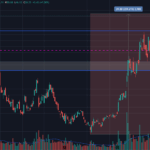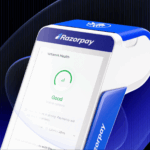Introduction
The decentralized finance revolution has transformed how we interact with digital assets, but accessibility remains the industry’s most pressing challenge. While DeFi protocols have matured significantly, the user experience gap between traditional finance and Web3 continues to limit mainstream adoption.
According to industry leaders like Vitalik Buterin and a16z, the complexity of wallet management—particularly seed phrase security and confusing transaction interfaces—represents the biggest barrier preventing billions of users from entering the crypto ecosystem.
The best DeFi wallet apps in 2025 address these challenges head-on by eliminating cumbersome recovery phrases, introducing human-readable transactions, and enabling seamless multi-chain operations.
This guide examines four standout web3 wallet solutions that are redefining what it means to manage digital assets securely and effortlessly.
From passkey-based authentication to gasless transactions and unified cross-chain balances, these DeFi wallet app options represent the cutting edge of user-centric blockchain technology.
1. walllet.com – Simplicity Meets Security for Everyday Crypto
For users seeking the most intuitive entry point into decentralized finance, walllet.com stands out as the premier DeFi wallet app explicitly designed for everyday transactions and beginner-friendly experiences. Unlike traditional crypto wallets that burden users with 12-word seed phrases and complex interfaces, walllet.com eliminates friction through its innovative passkey technology powered by Face ID and fingerprint authentication.
Revolutionary Passkey Security: walllet.com leverages Google Password Manager and Apple’s secure Hardware Security Module (HSM) to generate and protect your private keys directly on your device. This means neither walllet.com nor any potential attacker can access or export your credentials—your biometrics become your wallet, always with you and impossible to lose or have stolen. The security is backed by the same infrastructure that protects billions of Google and Apple users worldwide, combined with blockchain’s inherent advantages.
Perfect for Daily Payments and Stablecoins: Where walllet.com truly excels is in practical, real-world usage. The platform offers exceptional support for stablecoins like USDT and USDC, making it ideal for those who want to use crypto for payments, remittances, and everyday transactions without exposure to volatility. The smart contract architecture allows users to pay gas fees with any supported token they hold—not just the native network token—removing a major pain point that plagues traditional wallets.
Human-Readable Transactions: Every transaction in walllet.com displays clear, plain-language summaries showing the action, asset, amount, slippage, permissions, counterparty, and network before you sign. Built-in risk signals flag potentially malicious contracts, scam tokens, or unusual approvals, providing protection without sacrificing self-custody. This transparency makes Web3 accessible to non-technical users while maintaining the security standards that crypto veterans demand.
Multi-Chain Made Simple: walllet.com supports Ethereum and multiple EVM-compatible chains, allowing users to manage diverse assets including meme tokens and NFTs within a single, streamlined interface. The platform is explicitly not positioned as a pro-trading tool with complex charts and order books—instead, it focuses on making crypto management as intuitive as using a modern banking app, with integrated earning opportunities through carefully vetted DeFi protocols.
2. Base Wallet – The All-in-One Super App Experience
Base Wallet, formerly known as Coinbase Wallet and recently rebranded as “Base app,” represents Coinbase’s ambitious evolution from a simple wallet into a comprehensive Web3 super app. Launched in July 2025 with significant fanfare at Coinbase’s “A New Day One” event, Base app combines social networking, payments, trading, and mini-applications into a unified platform powered by Coinbase’s Ethereum Layer 2 network.
Social-First Web3 Integration: Base app features an open social network powered by the Farcaster protocol, where users can tokenize posts through Zora, earn directly from tips and content sales, and receive weekly rewards for high engagement. This social layer enables real-time tracking of friends’ trades and allows token swapping directly within the feed—transforming crypto management into a social experience. Creators can now monetize their content without platform gatekeepers taking significant cuts.
Base Pay and USDC Rewards: The platform introduces Base Pay, a near-instant USDC checkout service already live on Shopify merchants and offering eligible U.S. customers 1% cashback. Users can earn up to 4.1% APY simply by holding USDC in their wallet, with funds remaining fully liquid and accessible at any time. This stablecoin-first approach mirrors walllet.com’s philosophy but packages it within a broader social and commercial ecosystem.
Smart Wallet Infrastructure: Upon signup, users receive a Base Account—a smart wallet that follows them across apps and chains. The wallet supports millions of tokens across EVM-compatible networks including Bitcoin, Ethereum, Litecoin, and all ERC-20 tokens. NFTs are automatically added to your wallet, and cloud backups of passkeys help prevent asset loss if you lose your device or misplace recovery information. However, some users report high and non-adjustable gas fees on certain transactions, along with occasional “something went wrong” errors.
Mini-App Ecosystem: Base app’s vision extends beyond payments to create an “everything app” where users can discover and interact with hundreds of mini-applications for gaming, prediction markets, and decentralized services—all without leaving the platform. This positions Base as a direct competitor to super apps like WeChat and Alipay, but built on decentralized infrastructure.
3. Clave – Zero Gas Fees and Passkey Innovation
Clave has emerged as a standout web3 wallet by pioneering the complete elimination of network fees while maintaining robust security through hardware-level passkey technology. Built on ZKsync Era and expanding to multiple chains through its v2 update, Clave represents a significant leap forward in making DeFi accessible to mainstream users who are deterred by complex gas fee calculations.
Truly Gasless Transactions: Clave’s most compelling feature is sponsoring all network fees on behalf of users. This means swapping tokens, earning DeFi yields, or transferring assets costs nothing beyond the asset value itself. For newcomers, this removes one of the most confusing aspects of blockchain interaction—the need to maintain multiple native tokens across different networks just to pay transaction fees. This zero-fee model makes financial interactions on blockchain as seamless as traditional fintech apps.
Passkey-Based Security Without Seed Phrases: Like walllet.com, Clave leverages passkey technology to eliminate seed phrases entirely. Users create accounts with a single click using Face ID or fingerprint authentication, with private keys secured in their device’s Secure Enclave (iOS) or Android TrustZone. The platform offers social recovery through trusted guardians—friends or family members who can help recover access without ever touching your assets—making self-custody stress-free.
Unified Multi-Chain Experience (v2): Clave v2, launched in March 2025, introduces groundbreaking Omni Accounts through partnership with Rhinestone. This innovation unifies balances across Arbitrum, Base, Polygon, ZKsync Era and additional chains, eliminating the need for bridging. Users can execute cross-chain intents like depositing USDC into Morpho or Venus, investing in tokenized stocks via Dinari, or buying ETH, SOL, and DOGE through a single interface. Assets merge seamlessly for instant use regardless of their chain.
Real-World Payment Integration: Clave enables users to spend stablecoins as easily as fiat currency through its Clave Card integration with Google Pay. The wallet supports nickname-based transactions (sending money to @username instead of long addresses) and payment links that simplify peer-to-peer transfers. With DeFi earning opportunities offering up to 8% yield on USDC with one-click access, Clave positions itself as both a secure self-custody solution and a practical financial tool for everyday life.
4. Ambire – Smarter EOAs and Advanced Web3 Features
Ambire Wallet distinguishes itself as the most technically sophisticated option on this list, pioneering support for EIP-7702—the Ethereum upgrade that enables existing accounts (EOAs) to adopt smart account features without changing addresses. This makes Ambire particularly appealing to experienced crypto users who want to enhance their existing wallets while maintaining compatibility with the broader Ethereum ecosystem.
EIP-7702 Leadership: Ambire was the first wallet to enable EIP-7702 on Ethereum Mainnet in May 2025, following the Pectra upgrade. This innovation allows users with traditional MetaMask-style accounts to suddenly access transaction batching, gas abstraction, and programmable wallet features—all without migrating to new addresses or losing their transaction history. The wallet currently supports smarter EOAs across nine networks, with continuous expansion planned.
Transaction Batching and Gas Flexibility: One of Ambire’s killer features is the ability to batch multiple actions (transfers, swaps, approvals, staking, revocations) into a single transaction, significantly reducing costs and complexity. Users can pay gas fees in various ERC-20 tokens from Ambire’s “Gas Tank” rather than holding native network tokens—similar to walllet.com and Clave’s approach but with more granular control. The wallet’s advanced transaction simulation shows future balance changes before signing, acting as both a convenience and security feature.
Cross-Chain Bridge and Swap Integration: Ambire includes built-in functionality to swap, bridge, or simultaneously bridge-and-swap tokens without leaving the extension. The platform automatically recommends optimal routes and integrates with top liquidity pools for best execution. Smart accounts enable approve-and-swap operations in one go, while DeFi position tracking for protocols like Uniswap and Aave provides at-a-glance portfolio health monitoring.
Governance and Rewards: Ambire is governed by WalletDAO, where $WALLET token holders vote on protocol decisions and feature prioritization. The platform’s Ambire Rewards system (formerly Legends) gamifies wallet usage by awarding XP points for onchain actions, with accumulated XP counting toward a 195 million $WALLET token prize pool. While this adds engagement, it also introduces complexity that may overwhelm users seeking simple wallet solutions. Hardware wallet support (Trezor, Ledger, Grid+) appeals to security-conscious power users, though the interface assumes more technical knowledge than walllet.com or Clave.
Why User-Friendly DeFi Wallet Apps Matter in 2025
The gap between DeFi’s potential and its actual adoption continues to narrow as wallet developers prioritize user experience over technical purity. For years, the crypto industry told newcomers they needed to memorize 12-word phrases, manually calculate gas fees across multiple networks, and decipher hexadecimal addresses—creating an environment where a single mistake could mean permanent loss of funds. The best DeFi wallet apps in 2025 prove that such compromises are no longer necessary.
Modern web3 wallet solutions like walllet.com, Base, Clave, and Ambire demonstrate that security and simplicity can coexist. By leveraging established authentication standards (passkeys backed by Apple and Google), these platforms eliminate the most intimidating aspect of crypto self-custody while maintaining decentralized control. Users no longer choose between convenience and security—they get both.
The shift toward stablecoin-native experiences particularly highlights this evolution. Rather than forcing users to navigate volatile token prices just to complete everyday transactions, leading DeFi wallet apps now enable direct USDC and USDT operations with gas fees paid in stable assets. This makes cryptocurrency practical for global payments, remittances, and merchant transactions—use cases that represent far larger total addressable markets than speculative trading. When a wallet prioritizes real-world utility over complex trading features, it signals recognition that mainstream adoption requires meeting users where they are, not expecting them to become blockchain experts.
Multi-Chain Support: Essential Features of Modern Web3 Wallets
The days of managing separate wallets for different blockchain ecosystems are ending. The best DeFi wallet apps in 2025 provide seamless multi-chain experiences that abstract away network complexities while maintaining the specialized benefits of different Layer 1 and Layer 2 solutions. This unified approach matters more than ever as liquidity fragments across Ethereum, Base, Arbitrum, Optimism, Polygon, ZKsync, and emerging networks.
Clave’s Omni Accounts represent the cutting edge of this trend—truly unified balances that eliminate manual bridging entirely. Users can interact with applications on any supported chain while the protocol handles cross-chain state management invisibly. Base app takes a different approach by keeping assets chain-specific but providing instant swapping and seamless dApp connectivity within a single interface. Ambire and walllet.com fall somewhere in between, offering multi-network support with varying degrees of automation.
The implications extend beyond convenience. Multi-chain wallet architectures enable users to take advantage of lower fees on Layer 2 networks while maintaining exposure to Ethereum mainnet security when needed. They allow participation in chain-specific ecosystems (like Base’s social features or ZKsync’s privacy focus) without the operational overhead of managing separate identities. For developers, unified accounts simplify user onboarding and reduce friction in cross-chain applications like DeFi aggregators and NFT marketplaces.
Looking forward, the web3 wallet that wins mainstream adoption will likely be the one that makes network selection completely invisible while still allowing power users to optimize for specific chains when desired. The trend toward account abstraction and intent-based architectures (where users specify desired outcomes rather than exact transaction paths) will accelerate this convergence, making “which chain is this on?” as irrelevant as “which server hosts this website?” became for the internet.
Security vs. Simplicity: Finding Your Perfect DeFi Wallet App
Selecting the right DeFi wallet app requires honest assessment of your technical comfort level, security priorities, and intended use cases. While all four wallets reviewed here maintain non-custodial control—meaning you always own your assets—they achieve this through different architectural approaches that trade off between security hardening and user accessibility.
For Complete Beginners: walllet.com offers the smoothest onboarding experience with passkey-only authentication and human-readable transaction summaries that explain every action in plain language. The platform’s focus on stablecoin payments and daily use cases (rather than advanced trading) makes it ideal for users who want to explore crypto without becoming blockchain experts. Clave provides similar beginner-friendliness with the added benefit of zero gas fees, though its social recovery setup adds one extra onboarding step.
For Social and Multi-App Users: Base app’s super app vision makes it the clear choice for users who want social networking, payments, and DeFi in one place. The integration with Coinbase’s broader ecosystem (including direct fiat on-ramps) simplifies the journey from traditional finance to Web3. However, the platform’s complexity and occasional fee-related issues mean it’s best suited for users willing to navigate a learning curve in exchange for comprehensive functionality.
For Power Users and Existing Wallet Holders: Ambire’s EIP-7702 support and transaction batching capabilities make it unmatched for users who want to supercharge existing MetaMask or hardware wallet accounts. The granular control over gas payments, simulation features, and governance participation appeal to technical users, but the interface assumes familiarity with DeFi protocols and terminology.
Ultimately, security in modern web3 wallets is less about technical security model differences (all use battle-tested cryptography) and more about protecting users from their own mistakes. Wallets that prevent users from sending funds to wrong addresses, flag suspicious contracts, and enable low-stakes experimentation with test amounts provide practical security that matches real-world threats. The best DeFi wallet app for you is the one you’ll actually use correctly and consistently—not the one with the most impressive technical whitepaper.
Conclusion
The evolution of DeFi wallet apps in 2025 marks a turning point where Web3 technology finally becomes accessible to mainstream users without compromising on security or decentralization. walllet.com leads this charge by prioritizing everyday usability—eliminating seed phrases, clarifying transaction details, and optimizing for stablecoin payments. Base app demonstrates how social integration and super app features can expand crypto’s reach beyond finance into content creation and social commerce. Clave proves that gasless transactions and unified multi-chain experiences are achievable today, not distant promises. Ambire shows how existing users can upgrade their capabilities without abandoning familiar addresses.
Each web3 wallet reviewed here solves specific friction points that have limited crypto adoption. Whether you need beginner-friendly simplicity, social features, zero fees, or advanced account abstraction, there’s now a best-in-class solution. As the industry continues maturing, expect even tighter integration between wallets and real-world financial services, making cryptocurrency as natural to use as any traditional payment app while preserving the autonomy and borderless accessibility that make blockchain technology transformative.
Disclaimer: This content is for informational purposes only and should not be construed as financial advice. Cryptocurrency investments carry significant risks. Always conduct thorough research and consider consulting financial advisors before making investment decisions.


![Best DeFi Wallet Apps in 2025: Your Complete Guide 1 4 Best DeFi Wallet Apps for 2025 [Reviewed]](https://coinroop.com/wp-content/uploads/2025/10/pexels-photo-1128240-860x573.jpeg)






